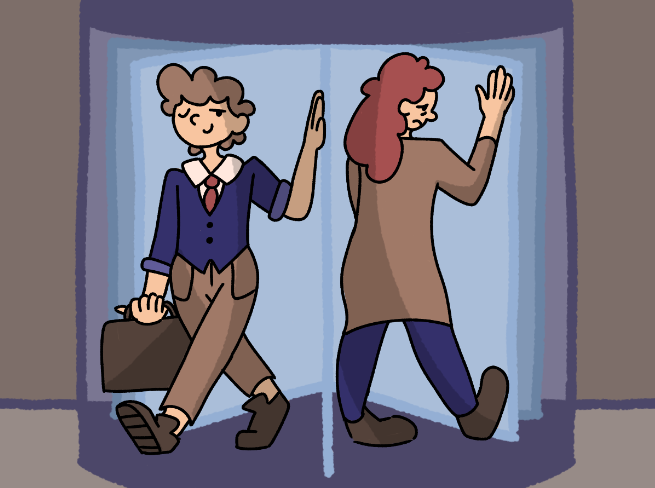
In Mongolia’s countryside, dirt roads wind together and apart, splitting for two meters or 200, destined for waterless deserts or livestock-filled lake sides, limitless and unending. Mongolian nomads move their homes and herds along these paths without satellite GPS systems, maps or even compasses.
A true Mongolian can find his way with his intuition and inherent sense of direction, passed down from a lineage spanning over 800 years.
And yet, last summer, on June 11, at approximately 5:15 p.m. ULAT Time, or 4:15 a.m. US Central Standard Time, this supposed “true Mongolian” found herself lost in her own hometown.
To be fair, this was a hometown in which I’d spent just eight months of the last 13 years. We’d moved to the United States when I was five and had only returned for a few summers. And now, newly determined to cross intersections, pay bus fares and test my street skills in bustling Ulaanbaatar on my own, I had gotten myself completely lost.
So desperately lost, in fact, I couldn’t find my way back to the office in which I was working, the State Department Store in which I’d lunched, even the main road down which I’d walked that morning.
At a loss for what to do, I started walking and told myself not to panic. I walked across roads without crosswalks and sometimes even stood, terrified, in the middle of two passing lanes of traffic, all to decide I’d taken the wrong route and to trek back the way I’d come.
They say the journey is half of the destination, that one should experience life as a trip and not as an end goal.
But my apartment was definitely a place, an endpoint to the day. And perhaps we should live life as a journey, but I certainly wanted to get to my immediate destination. I didn’t care how it happened or which routes I took.
When the supposed-to-be-leisurely journey had tripled from its intended 20 minutes into an hour long panicked scramble, I put aside my pride, approached the first strangers I encountered and asked how to find the Information Technology Park, which I knew to be close to my apartment. They didn’t know, so I asked about another location in the same neighborhood: Sukhbaatar’s Square, UB’s most well known landmark and, therefore, undoubtedly the most embarrassing place I could admit to being incapable of finding. And so they laughed and told me I was headed the wrong way and pointed toward the southeast.
Another hour later, I saw, faintly, the Blue Sky monument, a building that resembled, a pregnant stomach to some and, to others, the edge of a sword, reaching up to represent Mongolia’s nickname, the Land of the Blue Sky. Through gaps in between large Soviet-style apartment buildings, I rushed towards my first familiar landmark.
But when the Blue Sky was in sight, its surroundings were unfamiliar.
By this point, I’d learned to follow behind focused businesswomen when crossing streets, gotten bearings on where the first post office was in relation to famed opera house and seen more of UB than I could remember experiencing in all my life. But all of this had no importance, because I still wasn’t where I wanted to be. I’m not going to find my way home, I admitted to myself. No way.
But finally, I decided to walk a tiny bit more, just a few blocks, just to prove to myself that I’d tried everything I could. I turned around, and there was the parliament building, at the head of the Square, facing right at me.
For some, the trip is more important than what it leads to. For me, the end goal has all the importance. My half-day flights to Mongolia were worthwhile only when I’d finally landed at Chinggis Khaan International airport, and my hardest efforts were monumental because of the rewards they allowed me to reap.
This is not to say I don’t enjoy the trip; I love working toward a goal — boarding and deplaning four different air crafts, discovering and focusing so much on the work in front of me that hours pass by like minutes — but for me, life’s arduous journeys just augment the satisfaction of reaching my destination. The annoyance of re-crossing streets I’d struggled to get across in the first place and the disappointment of, after all of that, still not knowing how to get home had not been in vain.
Elated, I ran across six lanes of traffic, crossed the Square and stood in front of Chinggis Khaan’s looming statue. Walking in my apartment’s front door would be worth this multi-hour panic, I thought. I envisioned crossing that threshold, putting down my bags, and sitting at the kitchen table to tell my aunt about my journey, all the more meaningful because it had finally gotten me home.
By Nomin-Erdene Jagdagdorj















































































